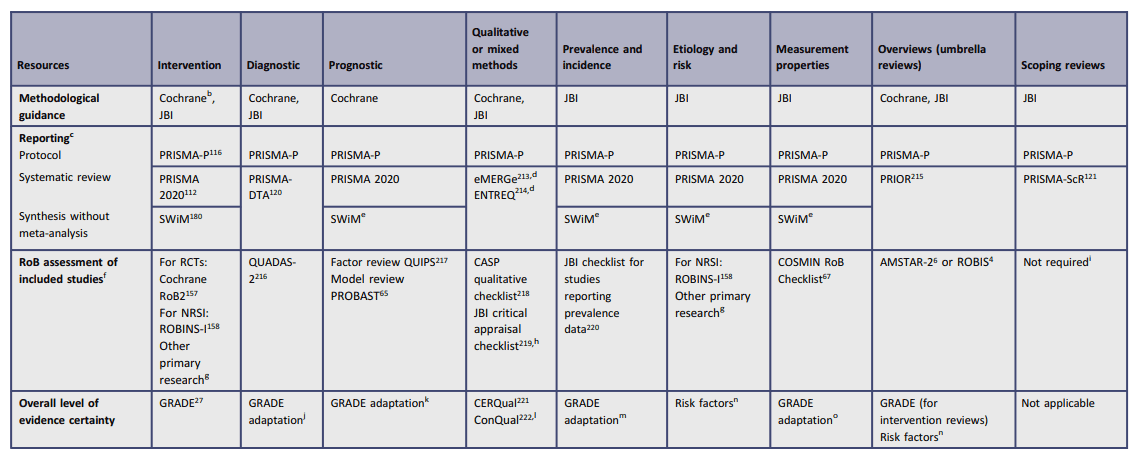
Best tools and practices for systematic reviews
A methodology paper and practical guide
The methodology paper, Guidance to best tools and practices for systematic reviews, takes a deep dive into the current state of evidence synthesis. The authors, Kolaski et al, highlight issues in the conduct of systematic reviews which can result in flawed, biased or redundant reviews.
“Evidence syntheses are mostly retrospective exercises, they often depend on weak or irreparably flawed data, and they may use tools that have acknowledged or yet unrecognized limitations. They are complicated and time-consuming undertakings prone to bias and errors.”
The aim of the paper is to address confusion experienced by systematic review authors which can lead to flawed systematic reviews. For example, confusion related to terminology is addressed by providing a table of terms relevant to the reporting of healthcare–related evidence syntheses, as defined by the PRISMA 2020 Statement
Also provided is a Concise Guide that summarises the methods and tools recommended for the development and evaluation of nine types of evidence syntheses: “Suggestions for specific tools are based on the rigor of their development as well as the availability of detailed guidance from their developers to ensure their proper application.”
 Concise Guide for best tools and practices for systematic reviews
Concise Guide for best tools and practices for systematic reviews
While Kolaski et al encourage the use of the best practice resources provided in a Concise Guide, they emphasise the need for proper training and diligent application to help ensure the production of trustworthy systematic reviews: “Appropriate, informed use of these is encouraged, but we caution against their superficial application and emphasize their endorsement does not substitute for in-depth methodological training.”
The methodology paper is available in the September issue of JBI Evidence Synthesis.
Guidance to best tools and practices for systematic reviews
Kolaski, Kat; Logan, Lynne Romeiser; Ioannidis, John P.A.
JBI Evidence Synthesis 21(9):p 1699-1731, September 2023. | DOI: 10.11124/JBIES-23-00139